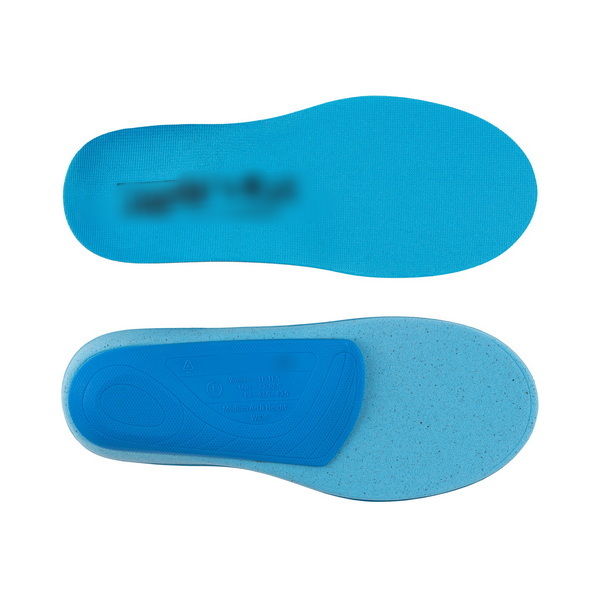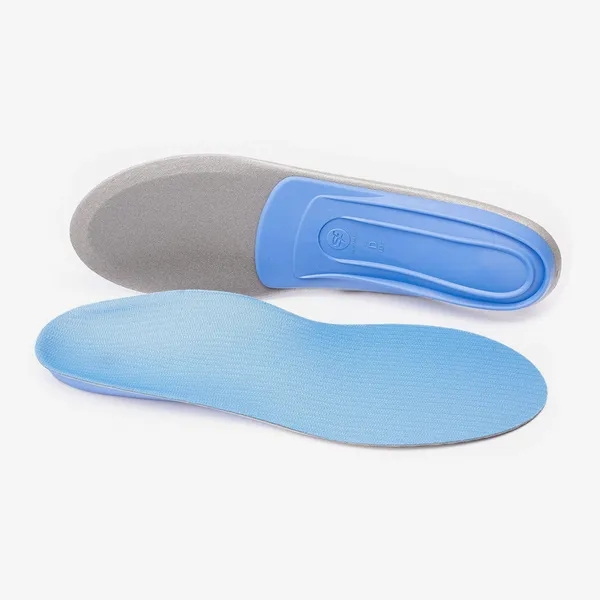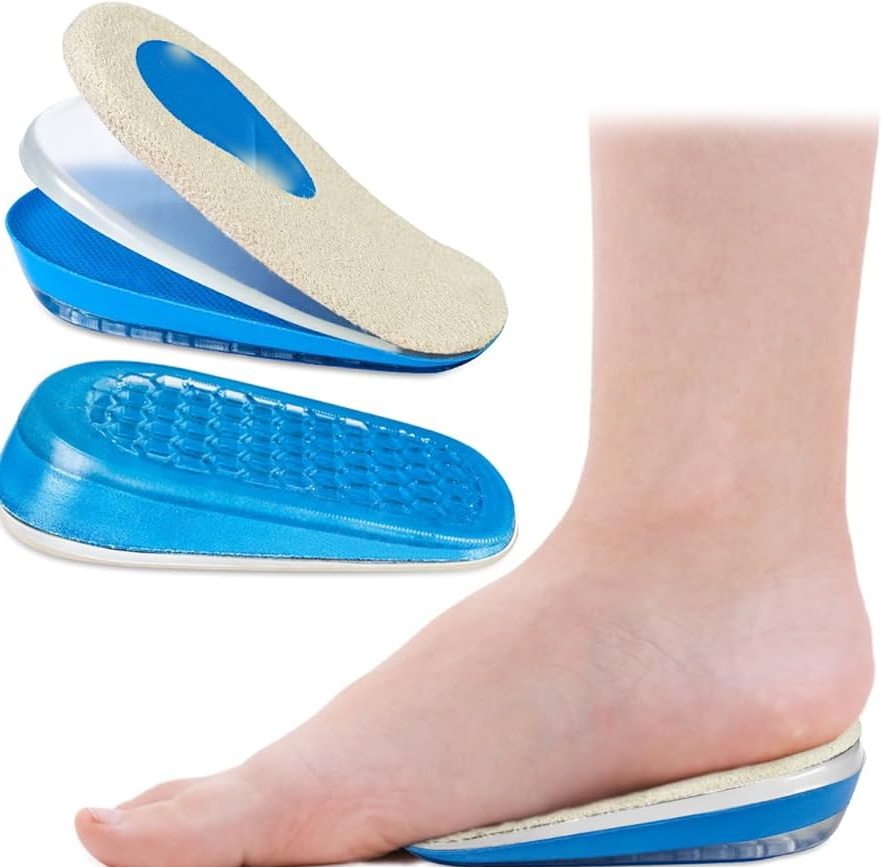Views: 222 Author: Edvo Publish Time: 2025-10-26 Origin: Site











Content Menu
● Understanding Wide Feet and Orthotics
● Essential Shoe Features for Wide Feet with Orthotics
>> 3. Sturdy Midsole and Heel Counter
>> 4. Width Options and Flexible Upper Materials
>> 5. Cushioning and Arch Support
● Top Running Shoe Brands That Support Wide Feet and Orthotics
>> New Balance
>> Brooks
>> ASICS
>> Saucony
>> HOKA ONE ONE
● The Fitting Process: How to Ensure a Perfect Fit
● How Orthotics Influence Shoe Function
● Common Mistakes When Choosing Orthotic-Friendly Running Shoes
● Everyday Care for Shoes and Inserts
● Matching Running Shoes to Different Terrains
>> Road Running
● Choosing the Right Sock and Lacing Technique
● Customization: When to Consider Professional Orthotics
● Why Shoe Depth and Shape Matter
● Signs You Need New Shoes or Orthotics
● Lifestyle and Recovery Tips for Wide-Footed Runners with Orthotics
● FAQs
>> 1. What type of orthotics are best for running?
>> 2. Should I size up my running shoes when using orthotics?
>> 3. Are stability shoes compatible with orthotics?
>> 4. How can I tell if my orthotics are affecting performance?
>> 5. How long do orthotic-compatible shoes last?
Finding the perfect running shoes can feel like a balancing act. For runners with wide feet who also use orthotics shoe, the challenge doubles—comfort, stability, and compatibility all matter. The wrong pair can cause soreness, blisters, or poor alignment, while the right one can help you run longer, faster, and with less risk of injury. This guide explores how to select the ideal running shoes designed specifically for wide feet and orthotics, along with expert tips, brand recommendations, and practical fitting advice.

Every foot is unique, but people with wide feet often face challenges other runners don't. A narrow shoe can cause pressure on the sides of the foot, restrict movement, and lead to discomfort in long-distance runs. Adding orthotics into the mix changes how your feet interact with the shoe's structure.
Orthotics—custom or prefabricated inserts—correct structural issues like overpronation, high arches, or flat feet. They realign the foot's natural posture and absorb shock, but they also require extra in-shoe space to fit comfortably.
When you have both wide feet and orthotics, you must look for shoes that offer:
- Extra width across the forefoot.
- Removable insoles for orthotic placement.
- Deep footbeds that prevent crowding.
- Strong heel counters to keep inserts secure.
The main goal is harmony between the shoe and your orthotic insert—supporting your gait naturally without discomfort or tightness.
Shoes with removable insoles ensure a customizable fit. Once the factory insole is removed, your orthotics can sit securely without altering the shoe's stability.
A deeper, rounded toe box prevents the upper material from compressing against the top of your toes, which is especially important for runners with splayed or wide forefeet.
The midsole should be strong enough to support the orthotic without compressing too much during runs. Meanwhile, a firm heel counter maintains alignment and prevents slipping.
Wide sizes (2E for women, 4E for men) make a significant difference. A flexible mesh upper adapts to your foot shape while reducing friction hot spots.
Since orthotics often replace some built-in cushioning, the midsole should provide balanced shock absorption, especially for longer runs.
Renowned for their variety of width sizes, New Balance shoes like the 990 and 1080 series offer unmatched comfort for wide-footed runners. Their durable midsoles and supportive frames make them ideal for orthotic accommodation.
Brooks prioritizes cushioning and stability. The Adrenaline GTS and Ghost models feature removable insoles, ample width options, and balanced support through every stride.
The ASICS Gel-Kayano and Gel-Nimbus lines blend stability and plush cushioning, while providing removable footbeds for custom fit. They are especially suited for runners seeking a balance between firmness and softness.
Saucony's Triumph and Guide models have wide sizes and flexible uppers, making them a reliable choice for comfort-focused runners using orthotics.
HOKA's signature oversized midsoles deliver soft cushioning and excellent shock absorption. The Bondi and Clifton models give plenty of space for orthotics without compromising stability.

Orthotic users must pay attention not only to length and width but also to depth and overall shoe volume. Follow these steps when trying new pairs:
1. Always Bring Your Orthotics: Never test shoes without them. Inserts can dramatically change how a shoe feels and fits.
2. Measure Both Feet Standing Up: Your feet expand under pressure, so sizing should reflect your full weight-bearing shape.
3. Test Toe Space and Heel Lockdown: You should be able to wiggle your toes comfortably, and your heel should feel secure without slipping.
4. Try the Same Sock Thickness Used During Running: Thicker socks can tighten the fit, so wear your typical pair when testing.
5. Walk and Jog Before You Buy: Some discomforts only appear during movement, especially when orthotics shift slightly.
Proper fitting ensures not just comfort but improved efficiency and injury prevention during your runs.
Orthotics change the way your foot interacts with the shoe midsole, often elevating your arch and redistributing weight. When paired with supportive shoes:
- They help maintain ankle alignment.
- They reduce pronation and excessive rolling.
- They enhance balance and power transfer.
However, using orthotics in a poorly designed shoe can cause instability. A deep insole cavity and firm midsole ensure your orthotics remain stable, helping you avoid uneven wear and discomfort.
1. Ignoring Width Options: Many runners use regular-width shoes that feel tight only after several runs. Upgrading to the next width size often resolves pressure issues.
2. Choosing Too Much Cushioning: Soft shoes may feel comfortable initially but can reduce orthotic efficiency. Balance is key.
3. Forgetting Heel Depth: A shallow shoe can cause your heel to slip out once the orthotic is inserted.
4. Not Replacing Worn-Out Orthotics: Flattened or cracked inserts can distort shoe alignment.
5. Skipping Professional Fitting: A podiatrist or gait specialist can spot misalignment that you might not feel immediately.
- Dry Shoes Naturally: Avoid direct heat after long runs; air drying prevents shrinkage or deformation.
- Rotate Pairs: Using two pairs alternately helps foam recover and extends life.
- Clean Inserts Separately: Gently wipe orthotics with mild soap and warm water, drying them completely before reinserting.
- Check Fit Every Few Months: Feet can change due to mileage, temperature, and swelling. Adjust as needed.
- Replace Shoes Every 500 Miles: Even premium models lose cushioning and structural integrity over time.
For hard pavements, choose highly cushioned options such as the HOKA Bondi or Brooks Ghost. Their midsoles absorb repetitive shock and reduce joint fatigue.
Wide-footed runners benefit from shoes with reinforced uppers and grippy outsoles, like ASICS Trabuco Max or Salomon Speedcross Wide. These keep orthotics stable even on uneven ground.
For speed sessions, lightweight and breathable shoes work best. Models like the Saucony Kinvara Wide deliver responsiveness while still accommodating orthotics.
Pairing the right sock type with your shoes and orthotics improves comfort dramatically. Moisture-wicking technical socks prevent friction, while seamless designs minimize hotspots. For those with high arches or wide insteps, parallel lacing or “heel-lock” methods provide secure fit without excessive pressure.
If off-the-shelf inserts aren't providing enough stability, see a podiatrist for a custom orthotic fitting. Custom inserts are molded precisely to your feet, making them ideal for correcting significant alignment issues. These often last longer, though they require shoes with removable insoles and adequate volume to accommodate the extra structure.
Shoe depth determines how easily an orthotic fits without lifting your heel too high. Look for models with generous interior volume and minimal internal seams. The shoe's shape should follow your natural foot outline—an anatomical curve helps distribute weight evenly while reducing pressure points. Wide runners often fare better with shoes designed on specific “wide lasts,” which are molds built with extra forefoot dimensions rather than simply stretching the upper.
Even if your shoes seem visually fine, internal wear may have compromised their performance. Replace or check your shoes if you notice:
- Increased shin or knee pain.
- Uneven sole wear.
- Reduced cushioning response.
- Slippage or instability when running.
Your orthotics should also be inspected if the top layer peels, the base cracks, or if the fit feels different over time.
Running is only part of the equation. Proper recovery and daily care extend foot health and shoe life:
- Perform Foot Stretches Daily: Strengthen arch and ankle flexibility.
- Switch to Supportive Casual Shoes: Wearing wide and orthotic-compatible sneakers outside running sessions prevents discomfort.
- Avoid Going Barefoot on Hard Surfaces: Maintain alignment consistency, especially after long runs.
- Monitor Body Weight: Increased load can affect both shoe and orthotic lifespan.
Runners with wide feet and orthotics need footwear that offers space, stability, and responsive cushioning. The best models combine a roomy design, balanced midsole, durable heel support, and removable insoles for a tailored fit. Brands such as New Balance, Brooks, ASICS, Saucony, and HOKA stand out for consistently integrating these features into their running collections.
By understanding your feet, prioritizing proper fit, and rotating your footwear responsibly, you can enjoy a more efficient, pain-free running experience. Whether you're training for a marathon or jogging daily, the right shoes will always support your stride and orthotic comfort.

Custom-molded orthotics from a podiatrist typically provide superior support. However, prefabricated sports orthotics also work well if they match your arch type and gait mechanics.
Yes, many runners go up half a size to create adequate space for their inserts. This helps prevent compression and allows free toe movement.
Orthotics often provide built-in stability, so neutral running shoes usually work better. However, if your podiatrist advises extra motion control, mild stability shoes can complement orthotic function.
If you experience uneven wear, reduced shock absorption, or foot slippage, your orthotics may be misaligned. Adjust placement or replace them if needed.
Most running shoes last between 300 and 500 miles. However, consistent orthotic use can slightly extend life by distributing pressure more evenly.